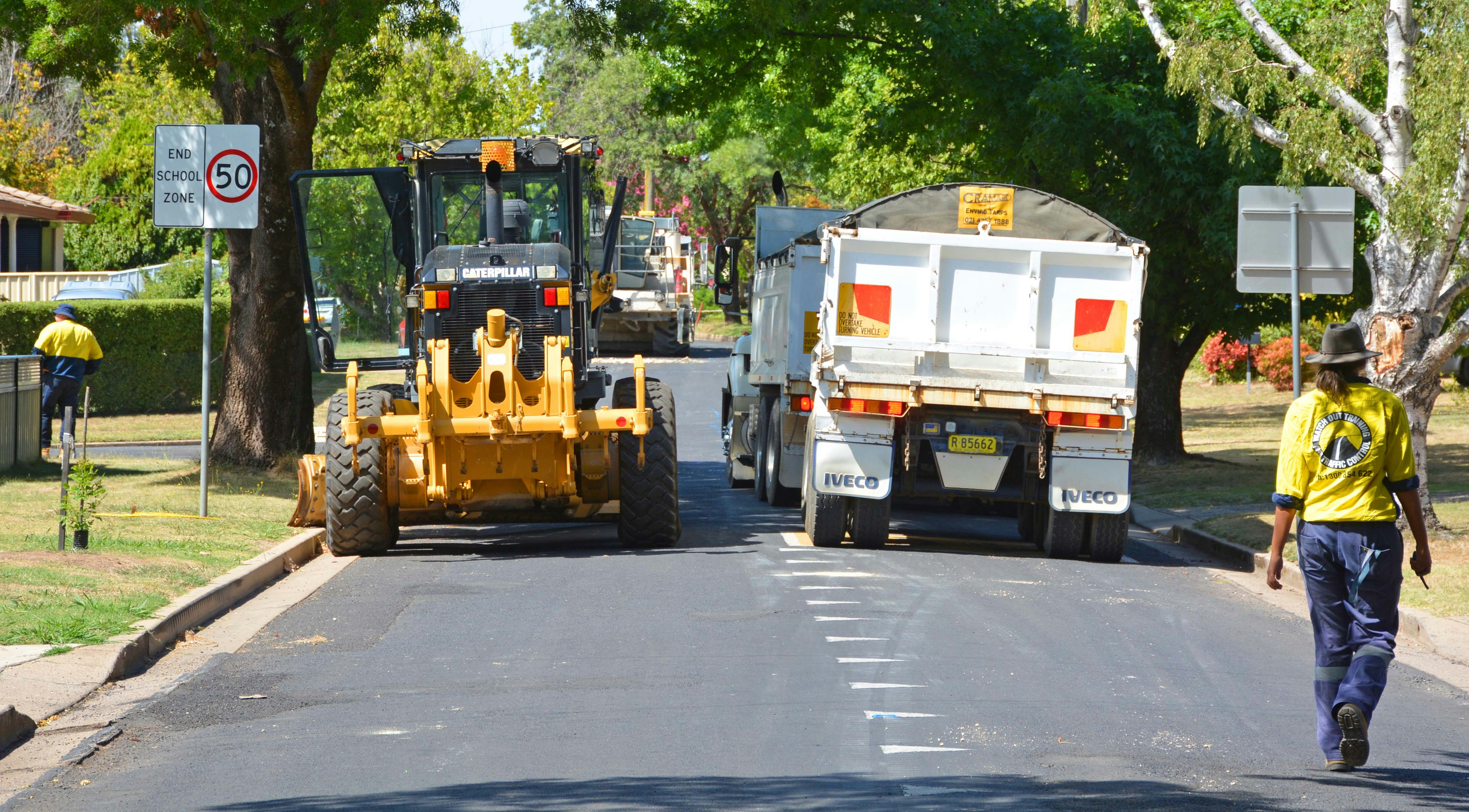FAQ
Pothole FAQs
Why weren’t the roads done properly in the first place so potholes wouldn’t happen?
The roads in Orange City have been constructed over the last 100 years to varying standards, depending on use, available budget and the technology and resources available at the time.
Over time the uses of surrounding land can change rapidly and some roads experience far higher traffic numbers and far heavier vehicles than expected.
All roads begin to deteriorate from the day they are constructed, so it is natural and expected that potholes will occur during their lives.
The emergence of a pothole is not necessarily a sign of a badly-made road.
A pothole happens when a small crack develops in the road surface, and after rain, water gets into the gravel foundations, weakening the underlying road base.
Passing traffic forces water further into the foundations and damages the surrounding road surface.
The likelihood that a pothole will happen, depends largely on the kind of road that’s built.
A road made of steel-reinforced concrete is very expensive to build but is much less likely to allow potholes to develop.
A road topped with 200 mm of hot mix asphalt, such as the re-surfaced Orange bypass road, is less likely to develop cracks and potholes, than a road surfaces with spray bitumen and gravel.
Orange City Council makes decisions on road construction and maintenance with consideration of the volume and type of traffic using a particular road.
Why do other council areas have better roads?
Dealing with roads is an issue for all local councils. There‘s been recent coverage of road potholes in Bathurst, Cabonne and Dubbo.
For example click the link to this story from The Western Advocate, this story from The Daily Liberal and, outside our region, residents experience the same frustrations, see this story from Wagga Wagga's The Daily Advertiser.
Where a council uses thinner bitumen gravel surfaces on local roads, it is more likely that a pothole will develop as opposed to using hotmix asphalt surfacing.
Orange’s cold and wet climate means that potholes are more likely to develop in some local roads and effective maintenance is made more difficult compared to towns with drier warmer climates.
Geology, slope of the road, the quality of local gravel resources and the presence of groundwater can all be highly variable and affect the longevity of a road pavement.
Council repairs the potholes then two days later they’re back again. Why does this happen?
Pothole repairs are a temporary solution that happens before more major patching or road replacement can occur.
Potholes happens when the road surface is damaged and water gets in under the surrounding surface. The expansion of this water during freeze and thaw and the simple effect of traffic weight on the trapped liquid cause the pavement to ‘blow out” and the holes to increase in size. Often over a short period of time. Depending on the amount of rain and passing traffic, a pothole can develop from a small crack to a large pothole in a matter of days.
In a location where one pothole had happened, it is possible that other potholes will also occur nearby, shortly after patching has been undertaken because the conditions in the road surface that allow the initial ingress of water are similar.
Water may even find its way between the newly patched hole and the surrounding pavement before it has sealed off properly, resulting in the premature failure of the repair.
Can I charge the Council for repairs to my vehicle allegedly caused by potholes?
It’s up to users of roads to drive at speeds and in a manner which is appropriate and safe in the circumstances and to assume responsibility for damage which may be incurred to their vehicles from faults in the roads which have not been caused by Council.
The Civil Liabilities Act can provide you with further clarification if so required. The link is located at http://www.austlii.edu.au/au/legis/nsw/consol_act/cla2002161/ . The relevant sections are 42 and 45.


